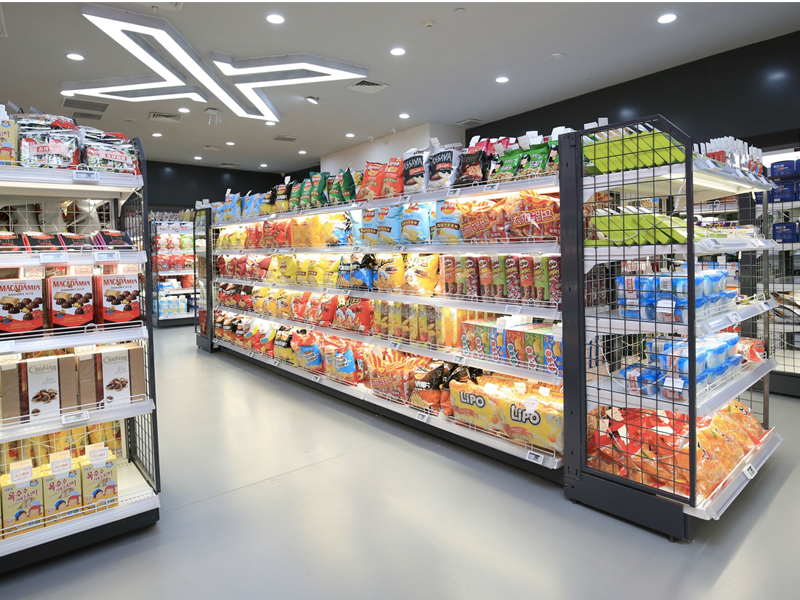Facility Management in Convenience Store

It's the modern era and the shots are called by the customers. Comfort shops in more than one way are certainly no exceptions to the law. Please note that a typical fuel shop has around 1,100 customers a day, with a total of more than 400,000 a year. Such clients generate considerable income by buying snacks, fast-food or coffee. There is tremendous pressure for customer dollars at one convenience store for every 2,100 people in the United States. Customers must be locked through the door and satisfied as they come in, so that the store varies from the crowd. It is important to remember that a clean, modern facility that provides a range of facilities starts with customer service. A trend of offering more food services in the form of restaurant items, frozen food and specialty beverages is a perfect example of a value added service. It is the response of the c-store industry to rising fuel sales revenue and a decline in the interest in millennia cigarettes.
DOMITOS TO THE FULLEST
Let’s take a look at four ways in which facility DOMITOS can drive results for convenience stores:
Routine maintenance and repair consolidation
Many c-store businesses have left it to local owners / managers, from the routine maintenance of freezers and refrigerators to HVAC repairs, to handle facilities management. The issue is, ultimately, unsuccessful with this approach. -- store may use another company to do similar repair work, or regular maintenance on the same equipment may be appropriate for two stores in the region at about the same time. With centralized facility management, there’s greater visibility into maintenance issues, asset status and necessary repairs, which enables better planning and coordination across multiple facilities.
2. Identify Experienced Service Providers
It can be time-consuming and frustrating to find efficient, reliable vendors and contractors. By building a list of eligible suppliers, who are approved by the company, it simplifies the process both for routine maintenance and for repairs. It will speed up research, make repetitive tasks more advanced, and save money. For instance, if a single HVAC provider performs maintenance in a chain of 20 stores, then better contract pricing can be negotiated.
3. Manage Key Property Assets
Specifically developed tools for facility management will further automate activities and improve performance. C-store assets data from building envelopes (windows, doors, roofs, CAST, etc.) to operational needs (coffee-makers, small appliances, refrigerators / freezers, etc.) are collected through facility management software. Such data may include details about the current state of the asset, necessary routine repairs, warranties, repair history and maintenance costs for lifetime. This is a great advantage to have all the details on key assets in a single place — it provides business stability and advises business choices, as when spending money in substitute equipment or building improvements.
4. Automate Work Order
The facility management program enables c-store managers to automate work orders, identify the necessary repairs and deal with all problems, with asset management and services providers in a single location. This help simplifies a job that is both time consuming and comprehensive. Job orders are quickly recognized and duplicate jobs can be generated anywhere. The detection of productivity opportunities in c-stores means lower cost and faster operation, ensuring that the facility is safe, clean and operates well — exactly what customers expect.
Whether or not you know that the management of facilities is the cornerstone of comfort shop marketing. Without a properly maintained facility, consumers may search for other options from landscaping to the slush dispenser. Current trends require convenience stores to be created, their product ranges expanded and the promise of a full experience fulfilled. Yet new assets need to be handled for any new equipment purchase or shop overhaul. Centralizing the roles of facility management and allowing technology to provide them with long-term results: returns and cost savings.
Retail hasn’t been easy in recent years. The rise of e-commerce, such as the behemoth Amazon, has disrupted many retail store operations, and it’s vital that today’s retail operations professionals adapt to handle that challenge. Many retail professionals say the key to success - in stores or online - lies in superior customer service, both today and in the future. The key players in these decisions are the facilities team's decisions in a retail setting – from maintenance, resources and design and construction. So, what is the link between stores and installations? Many retail firms may work closely together, but this is not always the case. Although the end goal is the same for all parties in a retail setting, it can be difficult to work together towards this objective through many differences. Nonetheless, recognizing the disparities and using them will create incentives for enhancing facilities and storage operations for other classes and eventually provide a better customer experience.
In general, one of the biggest differences is that the facilities team works “behind the scenes” and the store operations team is often interfacing directly with consumers. With facility management, the focus is more on capital and finding innovative ways to enhance processes that reduce costs or result in energy savings, while the performance of the store operations is measured by sales. This results in a large amount of external or market-based pressure on operations, while the pressure on facilities comes from within the organization. Store operations professionals often have a sale, marketing or business mind-set, while the facilities team is likely made up of professionals with engineering backgrounds. There is often higher turnover within the operations team, and a store director or captain often has a larger team to manage. Operations may consist of about 300 employees, while facilities may have, on average, about 10-20 employees.
Lets start with the simple way to create a website..

Interested in Domitos? Get the Features Guide Today!
Domitos, is world's most sought after facility Management System and we look forward to work with. Digitize your facilities today!